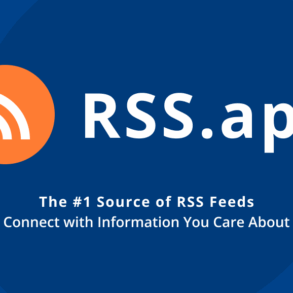
NIB says that despite its privacy policy, it does not monitor the social media of its customers to predict health outcomes. Photo: Shutterstock/Information Age
Australia’s third largest health insurer NIB has said the social media data it collects is not used to predict health, despite referring to this practice in public-facing documents.
A clause in its current privacy policy states: “We may also collect your personal information from third parties who provide services to NIB, including emergency assistance services to travel insurance customers, predicted health outcomes based on identified health, lifestyle and demographic factors, as well as publicly available sources such as internet search engines or social networking services.”
The clause, added five years ago, has remained the same except that, in July 2024, “emergency assistance services to travel insurance customers” was added, and “provide analytics services” became “provide services”.
Appearing to contradict the policy, a NIB spokesperson told Information Age “NIB does not track/use social media data to inform or predict health of current or future members.”
“The wording of the policy isn’t quite as clear as it could be – we are in the process of having this updated to help make it more clear how exactly we use social media data,” they added.
NIB’s third-party data providers include Woolworths, ING Bank and Qantas; and predictive analytics providers Dacadoo and WellteQ.
Some third parties NIB uses to predict health outcomes include platforms that capture social and biometric data and provide insurers and social media platforms risk assessment algorithms to embed in their app.
Third party analytics providers
Although NIB discloses that its members’ “health and wellbeing score” is “calculated using the Dacadoo health score”, Dacadoo does not disclose how its “Health Score uses biometric, lifestyle, and psychometric inputs to create a dynamic representation of overall health”.
Instead of specifying these inputs or where they were sourced, Dacadoo notes only the volume of data needed to build its “sophisticated algorithm…developed over nine years based on 400 million person-years of scientific data”.
Both NIB’s app and its subsidary GU Health’s app are underlined by WellteQ: a wellness coaching platform that tracks “heart rate, sleep quality, [and] stress levels” sourced from “wearables, nutrition and self-reported mental wellbeing data”.
WellteQ is integrated with other apps owned by its parent company Advanced Health Intelligence (AHI) that sells its computer vision-enabled measurement/dimensioning solutions to channel partners whose customers use them for services that range from enabling online shoppers to calculate their clothing size to diagnosing over “500 skin conditions”.
AHI’s solutions also provides “life/health insurance“ partners the ability to “underwrite dynamically with direct health information via the capture suite provided through a partner application”.
AHI’s partner ecosystem includes social media platform providers like WeChat-Owner Tencent, which partnered with AHI to embed the technology into its insurance solution WeSure to help “track users’ health and fitness and to accelerate on-line underwriting”.
The extent to which AHI and its partners share data with each other is not clarified by their broad privacy policies; AHI’s includes “a list of third parties with whom we are currently sharing users’ personal information”, but notes that it is “non-exhaustive” and NIB’s says that it “may pass on your personal information” to “white label partners” without specifying which ones.
Retail data partners
The privacy policy does not list whether and which data brokers are used, but NIB’s retail data providers have partnered with a firm that has used Facebook to predict consumer behaviour.
Qantas uses its retail brand to sell NIB’s health insurance and in exchange “Qantas Loyalty provides [NIB] its marketing, data and customer retention expertise”.
Similarly, NIB’s partnership with Woolworths’ loyalty program provides access to data about users’ “(products purchased, price paid, time and location of shops) to inform and assign a risk score.”
Qantas has, on at least one occasion, partnered with Quantium, a consumer data and analytics provider that Woolworths is both a customer of and 75 percent owner.
A 2016 post said that “Quantium has overlaid its data sets from NAB, Foxtel, Woolworths and News Corp with property data from CoreLogic to identify people within Facebook that are most likely to engage with your message based on their property details, spending patterns and media consumption.”
Then why does NIB collect social media data?
“In practice our organisation’s collection and use of social media data is very limited, primarily relating to marketing insights, brand and reputation management and member engagement,” the NIB spokesperson told Information Age.
“We may review aggregate, anonymised trends to inform the effectiveness of marketing campaigns and we may monitor public mentions of our organisation or brand to help us understand public sentiment and respond appropriately.”
Dr Zofia Bednarz, an expert in privacy law and the sector’s use of data analytics, told Information Age that “insurers do not necessarily need individual-level data to be able to draw insights relating to health, lifestyle or demographic factors.
“Insurance has always been a data-driven industry, and under current privacy and data protection laws there is no real impediment to collection of de-identified, aggregated data, from publicly available sources, including internet search engines or social media, data which can then be used to train AI models, for example, to price insurance or to predict fraud,” Bednarz said.
This post was originally published on this site be sure to check out more of their content







